Richard’s Pipit Anthus richardi
Very scarce passage migrant, mainly Sep-Nov, rarely Dec-Jan and Apr-May.
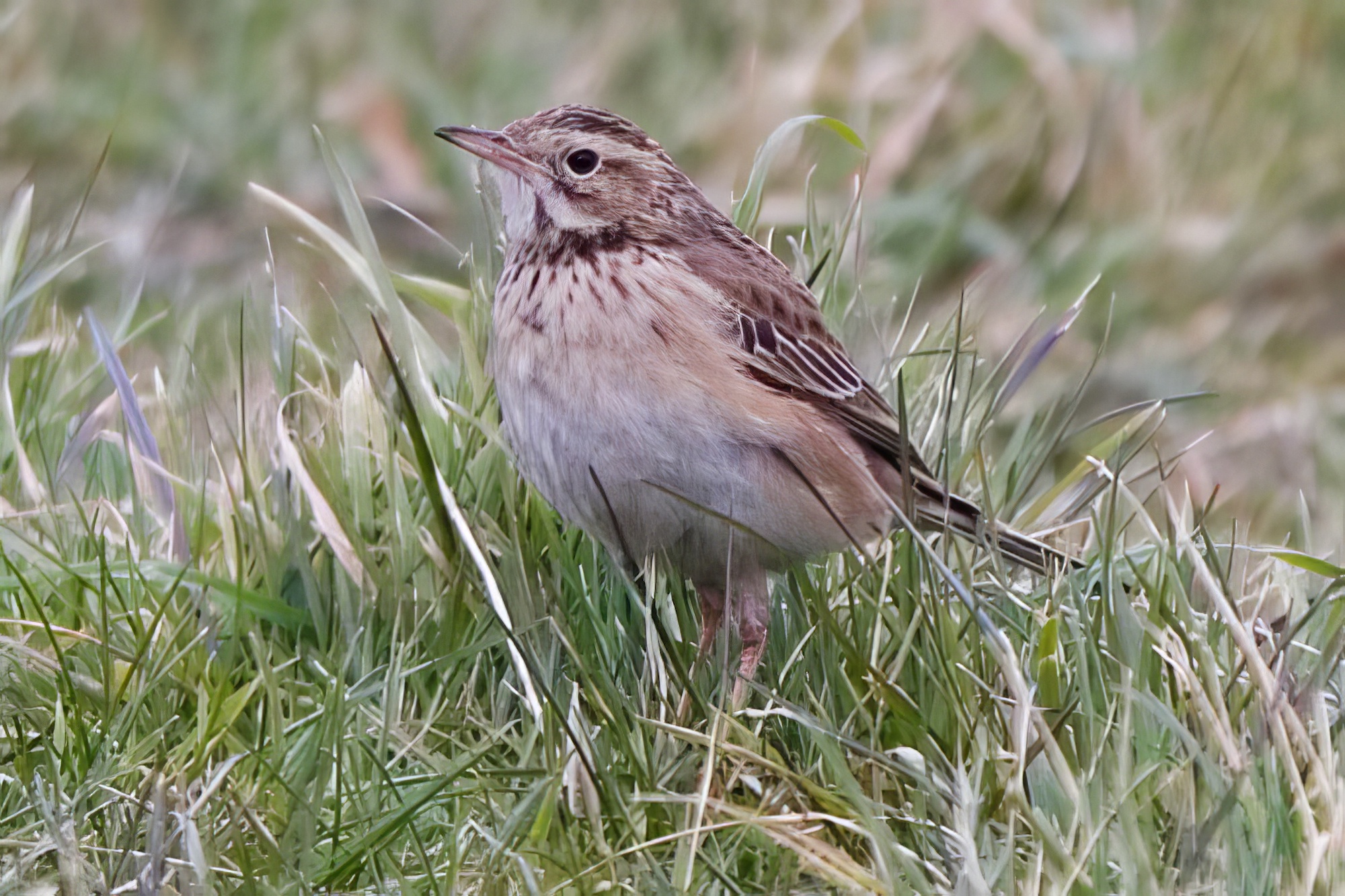
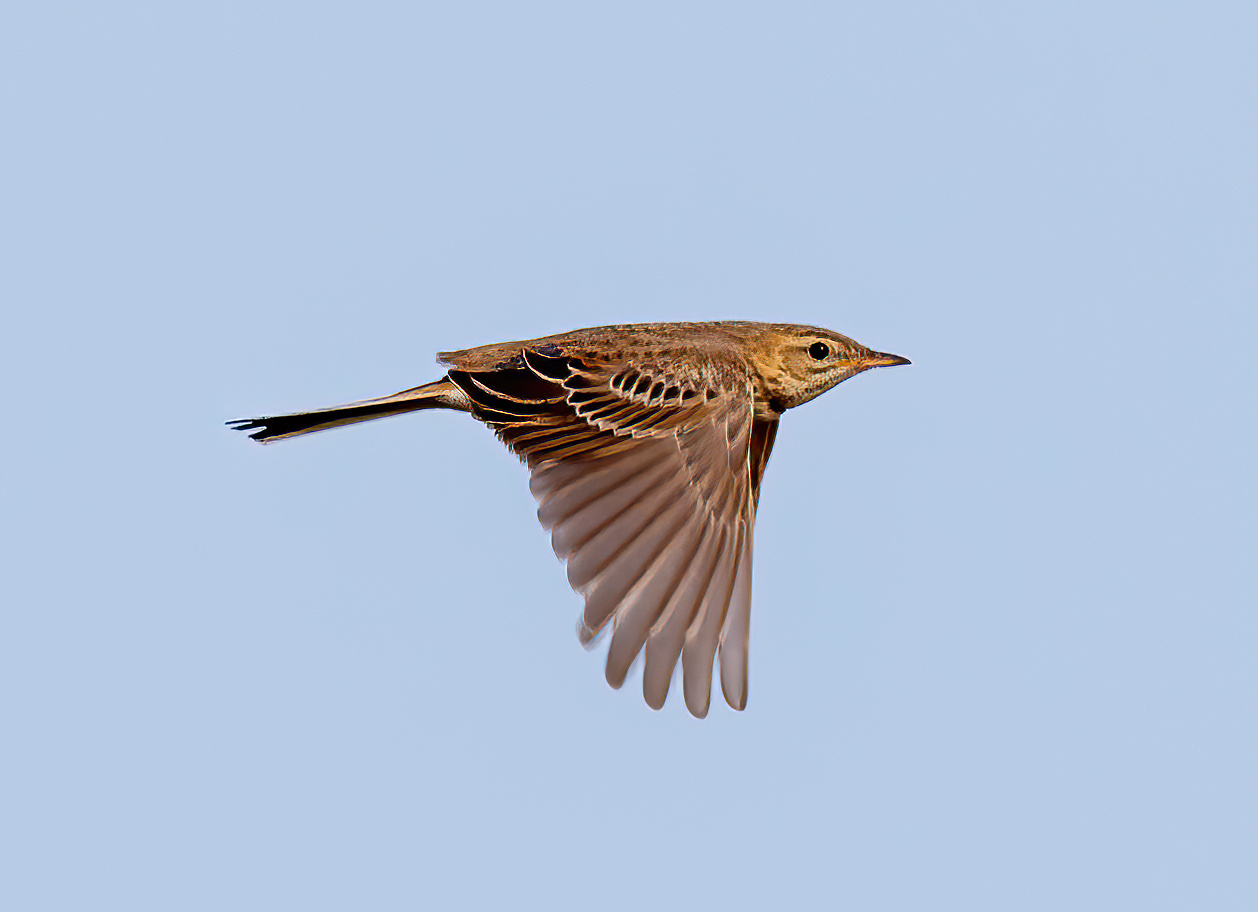
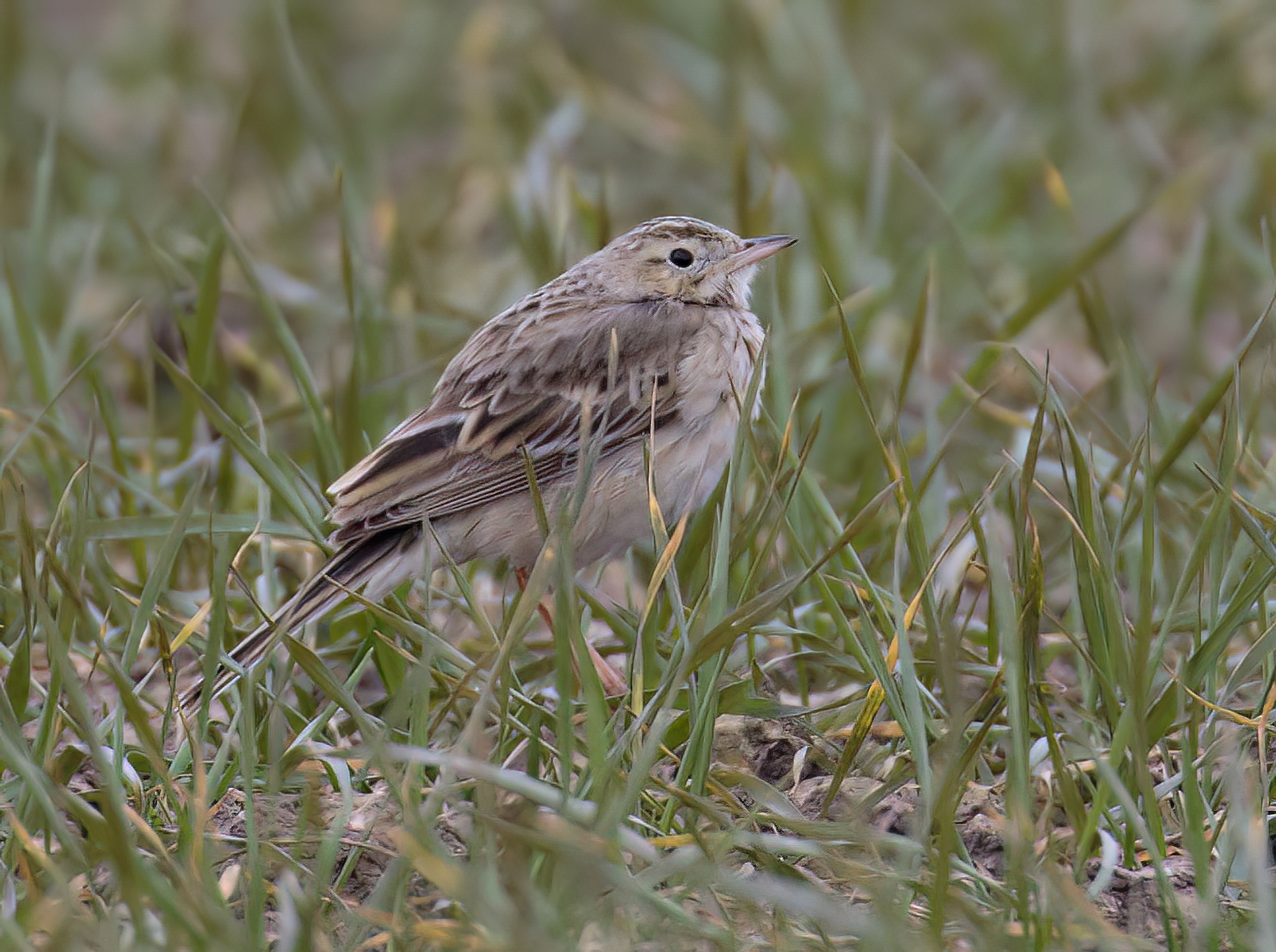
Richard's Pipits: left, Howden's Pullover February 24th 2008 (Mike Powell); centre, Donna Nook October 2nd 2010 and right, Goxhill Haven February 27th 2016
(both Graham Catley); this over-wintering bird is showing new greater coverts and tertials, the brighter, rufous-fringed feathers.
The first two records were at Tetney, October 12th, 1887 and shot at Marshchapel on November 16th, 1912. There was one at Saltfleetby in October 1951 and then a gap until October 1967 since when it has been all but annual with blank years in only 1996 and 2009. The numbers found per year have been variable, with most in 1968 (12), 1994 (12), 2013 (15) and 2016 (10). Two and three birds together have been recorded in 15 of the years, 1967-2019, but note that with ‘flyover’ birds and onward migration on the coast it can be difficult in some years to assess how many have actually been present over short periods of time. A conservative estimate of total numbers during this time is of 204 birds; the average per year has increased from 3.3 during 1980-1999 to 4.4 during 2000-2019, but with nearly six per year in the last decade. The reasons for the sudden increase in frequency of occurrence in the 1960s are unknown, but it may be connected partly with growing identification skills and knowledge of the calls. However, while most of the Asian populations of Richard’s Pipit winter to the south-east, a small proportion is now known to move south-west, behaviour that may have increased.
The species is predominantly an autumn migrant with most (more than 95%) found between mid-September and mid-November at coastal locations (see chart, below). Most are seen on single dates, but some stay longer, and a few have wintered. The first to have wintered was at Skidbrooke from December 19th, 1992 to January 10th, 1993; another wintered at the same site Jan 12th, 2008 to Apr 12th 2009, a total of 92 days. Two recent birds, which had most likely over-wintered, were found on the Humber at Goxhill, February 26th-March 14th 2016 and Alkborough February 6th-April 24th 2019. The latter bird was present for 78 days, the second longest after that in 2008. Both had a partial or full moult into 2CY/ pre-breeding plumage. Interestingly the April departure date of the bird in 2019 is very similar to the finding dates of three of the other spring records, viz April 14th, 1995; April 16th, 1998; April 22nd, 2015. Two others in spring were found May 9th, 1985 and May 16th, 2004. One highly unusual occurrence was a bird at Saltfleetby on August 15th 1975.
The majority of Richard’s Pipits have been found on the coast but a handful have occurred in each of The Wash and the Humber and three further inland, the first being one at Wisbech sewage farm on October 7th 1968 and others at Cadney Reservoir on October 14th 1988 and Baston-Langtoft gravel pits on November 4th 2006.
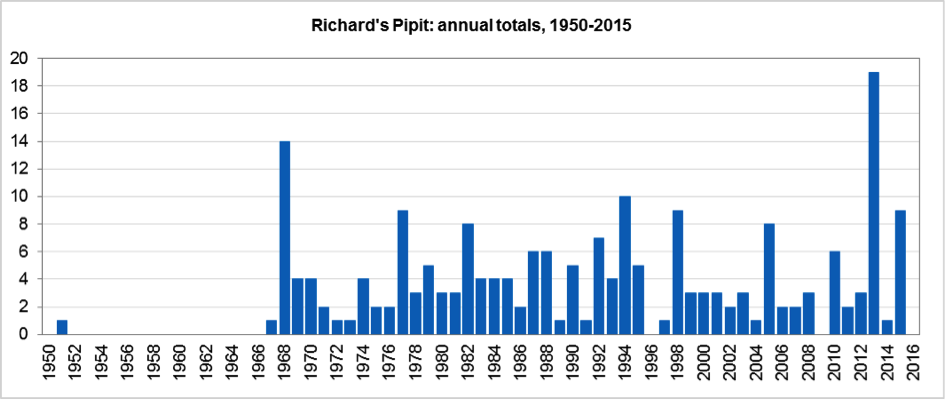
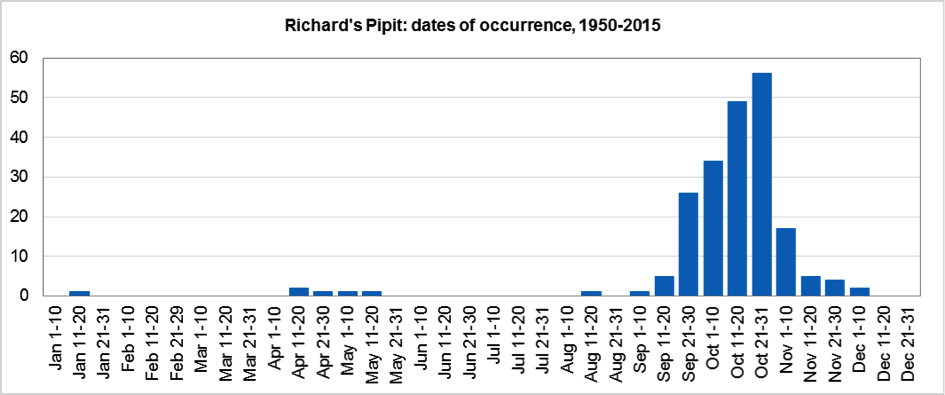
Finder’s report: Richard’s Pipit at Huttoft Bank GC, October 29th, 1968, an early county record.
by J. F. Cooper
Note: this account is based on the original RC submission and is the earliest that we have in the county archive. In the BBRC report for 1968, it was noted that a spring record in Orkney record was unusual, but the avalanche of autumn records in 1968 (at least 120) was so remarkable as to make the quite sizeable influx of 1966 (32-38 records) seem nothing by comparison and considering that there had been an average of about nine in the previous eight years. This invasion affected several other countries in northern Europe.
Circumstances
Whilst I was birdwatching on Huttoft Golf Course (GC), and in the sand dunes, October 29th, 1967, I flushed a large, long-tailed Pipit from six yd. from a green on the GC. The pipit appeared the size of an Alba wagtail with a similar tail length with conspicuous white outer tail feathers, brownish upperparts, and buffish underparts with streaking on the breast. As the bird flew past me it called on three occasions making a strong, loud “trreep”, not at all like the weak call note of the Meadow Pipit. It had a direct, slightly undulating flight, and it lacked the hurried wing beats of Meadow Pipit. The wings were broader and longer than a Meadow Pipit. On two occasions it hovered about 15 ft. in the air, similar to that of a Skylark hovering before landing, although it did not land. It appeared to land in a small grassy field at the south end of the GC, but although I made a thorough search for it, I failed to locate it, and I assumed that the bird had landed in one of many other fields in the area. On November 3rd, accompanied by Keith Atkin, we located the bird, on the ground, on the GC. It straight away gave the appearance of being larger, and having longer legs, larger and heavier bill, and a lot longer tail than the other commoner pipits. The following description was then taken.
Description
General appearance –
Head – crown was brown with darker brown streaks, a large, conspicuous white superciliary stripe, and a darkish stripe through the eye. The cheeks were pale greyish, and the ear coverts were pale buffish. From a distance this gave the face a very pale appearance.
Upperparts – back brown, conspicuously streaked with darker brown, rump a uniform brown. Wings were dark brown with pale buffish edgings on the primaries, and secondaries, and whitish tips on the wing coverts, which formed inconspicuous wing bars. Tail was dark brown with white outer tail feathers and very long.
Underparts – throat white, breast was pale buffish with noticeable dark streaks which were heavier on the sides of the breast. Flanks and belly buffish.
Bare parts – bill was pale, long, and heavy. Eyes blackish. Legs flesh-coloured, very long and appeared thickish.
Behaviour – it was very actively feeding, running around on the short grass. It had a very upright stance, and the long legs made this even more noticeable. When it was disturbed, it flew to the grassy bank which separated the GC from the sand dunes. We then flushed it on four further occasions. The flight was a previously described, although on this occasion it kept closer to the ground, but this may have been due to the strong wind blowing at the time. It gave the impression of being very wild, as it would never allow us to approach closely, and when we flushed it would fly a fair distance before settling. The bird was not heard to call on November 3rd.
On October 29th it was only seen in flight, and for a short while, but in very good sunlight. The large size, distinctive call, and long tail suggested Richard’s Pipit. On November 3rd it was watched on the ground, but in poor light with drizzle. It was observed on both occasions with 11x60 binoculars. I have had a lot of experience of the three commoner pipits, and I have seen Tawny Pipit in the autumn in Sussex, and at Portland Bill, and also in the breeding season in Greece, but I have never seen a Richard’s Pipit before. The bird was last seen by K. Atkin on November 8th.
(Account prepared October 2017; updated with reference to the new Birds of Lincolnshire (2021) December 2022)

